From mid-November to January, they gracefully share the spotlight with the beloved Christmas tree, adding a splash of colour and life to every festive scene. While the traditional red poinsettia flower remains a top choice, specialised breeders have introduced over 150 stunning varieties of coloured poinsettias.
From soft pinks and sunny oranges to creamy whites and vibrant reds, there is a poinsettia flower for every taste. Warm tones like apricot rose and salmon brighten homes as early as October.
Love your poinsettia but worried its days are numbered after the holidays? Think again! Although poinsettia plant care is often deemed challenging, adhering to a few key guidelines ensures their thriving presence not just during Christmas but well beyond.
From selecting the perfect poinsettia plant to ensuring it blooms season after season, this guide equips you with invaluable insights.
Key Care Principles to Keep Your Poinsettia Thriving Year-Round
Selecting the Perfect Poinsettia
Follow these tips to find a vibrant friend who will last beyond January:
Environmental Factors

The delicate nature of euphorbia poinsettia necessitates awareness of their environment. Do not be charmed by the first plant you see. Avoid plants positioned near automatic doors, where frequent blasts of cold air can inflict unseen damage.
Chilly blasts below 12°C (54°F) can damage leaves subtly, causing them to drop later. Temperatures below 12°C (54°F) during transportation or display should be avoided.
Source
Assessing Plant Health
Visual inspection is crucial in choosing a thriving poinsettia plant. Dense clusters of tightly packed yellow flower buds amidst the bracts indicate future blooms and healthy development. Opt for a poinsettia plant with vibrant green foliage, avoiding those exhibiting drooping or yellowing leaves. These buds promise future blooms.
Feel the Soil
The soil condition holds valuable insights into the plant’s prior care. Healthy soil is neither soggy nor dusty. Damp soil suggests potential overwatering, while dryness may indicate neglect. Ideally, seek a poinsettia tree with moist but not saturated soil, indicating an equilibrium conducive to sustained health.
Wrap With Love (and Paper)
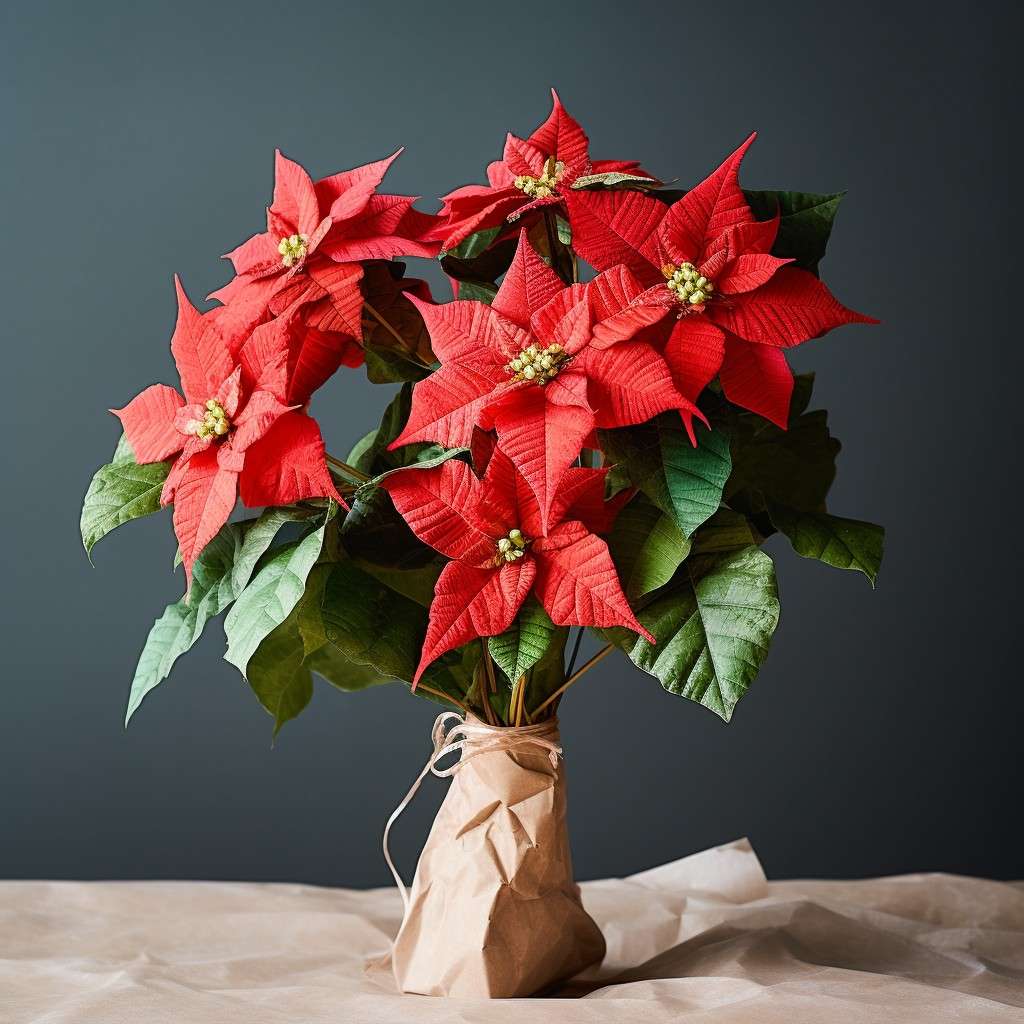
Post-purchase protection is essential for safeguarding your newly acquired plant. Treat your Christmas poinsettia like a VIP after purchase. Bundle it in paper for the journey home. Drafts and temperature extremes are still enemies, and this shield gives it extra protection.
Cosy Comfort for Your Poinsettia: Indoor Care Tips
Euphorbia poinsettia thrives in environments similar to cosy living rooms – warm, light, and sheltered from harsh winds. Here is how to create their ideal indoor haven:
Find the Sunshine Sweet Spot
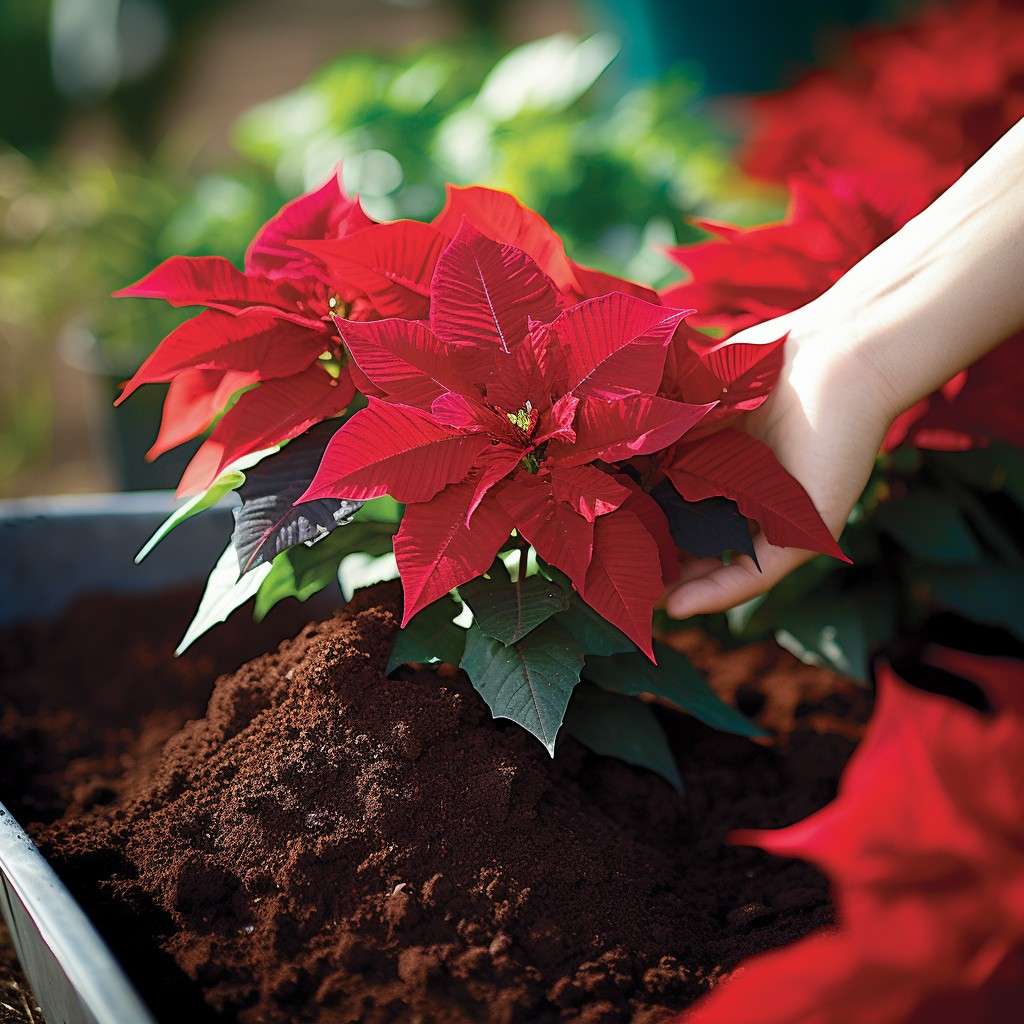
Sufficient light plays a vital role in the growth and vibrancy of the poinsettia flower. They favour locations bathed in gentle sunshine rather than languishing in complete shade. Poinsettias bask in sunlight, preferring at least 6 hours daily. An east-facing window catches the morning glow and afternoon shade, making it a prime spot.
While it is generally advised to shield plants from direct sunlight to prevent scorching, the diminished winter sun poses little threat. Therefore, positioning your poinsettia plant near a south-facing window during these months is perfectly acceptable. Ensure none of the plants touches the pane to avoid chilling. Consider rotating the plant regularly throughout the day to ensure even exposure and prevent lopsided growth.
Temperature Tips
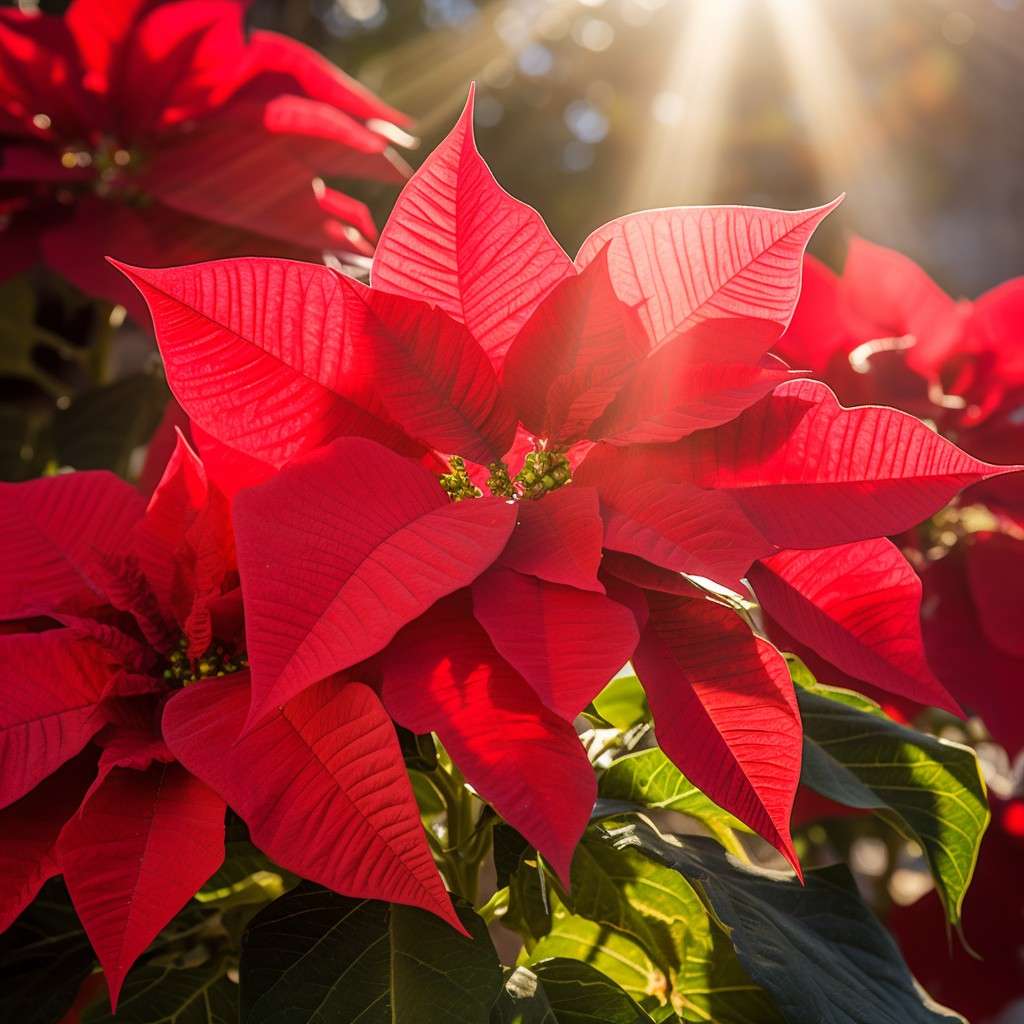
Poinsettias flourish within a specific temperature range, ideally between 15 and 22 degrees Celsius (59 and 72 degrees Fahrenheit). The poinsettia plant enjoys the company of radiators but keeps them away from drafty fireplaces, open windows, and doorways. They find comfort in the ambient warmth of bedrooms and living rooms, readily basking in the gentle heat emanating from radiators.
However, it is crucial to avoid exposing them to harsh drafts, as these sudden fluctuations in temperature can trigger leaf loss. Consequently, fireplaces, open windows, and drafty hallways must be avoided as placements for your poinsettia.
Mastering Poinsettia Hydration
Euphorbia poinsettia possesses surprisingly specific hydration requirements. To cultivate enduring beauty and prevent premature leaf drop, meticulous attention to watering techniques is paramount. The principles of ensuring optimal moisture levels for your poinsettia tree are:
Soft Water
Unlike humans, the poinsettia plant prefers soft water, free from the mineral harshness of tap water. Rainwater, nature’s gift of softness, is ideal. But if rainclouds are scarce, you can use:
- Purifying Tap Water: Boiling tap water allows mineral deposits to settle, leaving a purified liquid suitable for your poinsettia’s delicate root system. Alternatively, allowing tap water to stand overnight yields a similar effect.
- Water Mixtures: Combining tap water with distilled water or employing a filtration system reduces mineral content, rendering the water more hospitable to your poinsettia plant.
- Condensation: While condensation from your tumble dryer may offer a readily available soft water source, exercise caution in its application. Ensure the liquid remains free of detergent residues to avoid harming your plant.
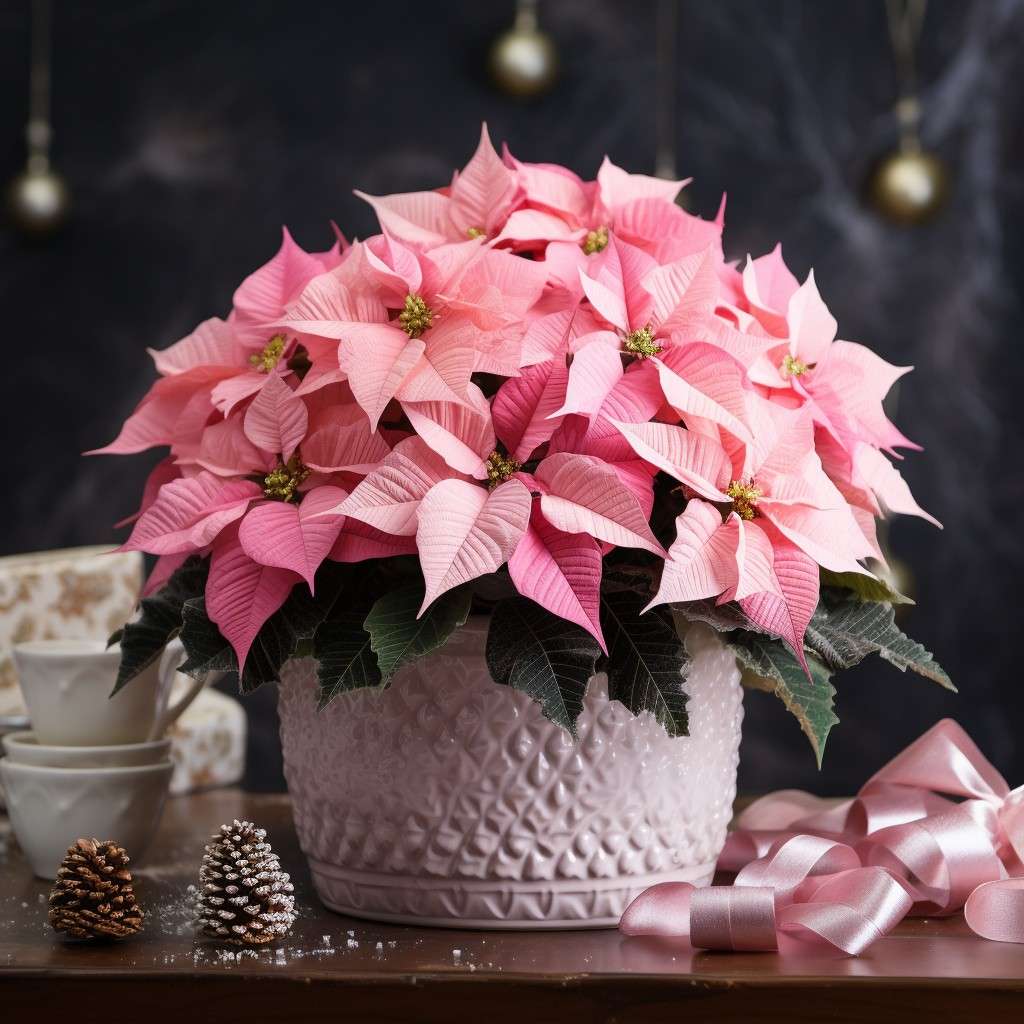
Finding the Watering Sweet Spot
Remember, the poinsettia plant dislikes soggy feet as much as parched ones. Overwatering is their ultimate nemesis, leading to root rot and a sad demise. So, resist the urge to pour. Instead:
- Listen to the Leaves: Drooping or yellowing leaves often signal watering woes. Observe your poinsettia closely and adjust your watering regimen accordingly.
- Inspect the Soil: The key lies in the earth. Poke your finger two centimetres deep if it is dry – time to water! Alternatively, lift the poinsettia plant – a feather-light feel translates to thirst. The soil itself holds the key to unravelling the mystery of your poinsettia’s hydration needs. Insert your finger approximately two centimetres into the soil. If it remains dry, then the time for refreshment has arrived.
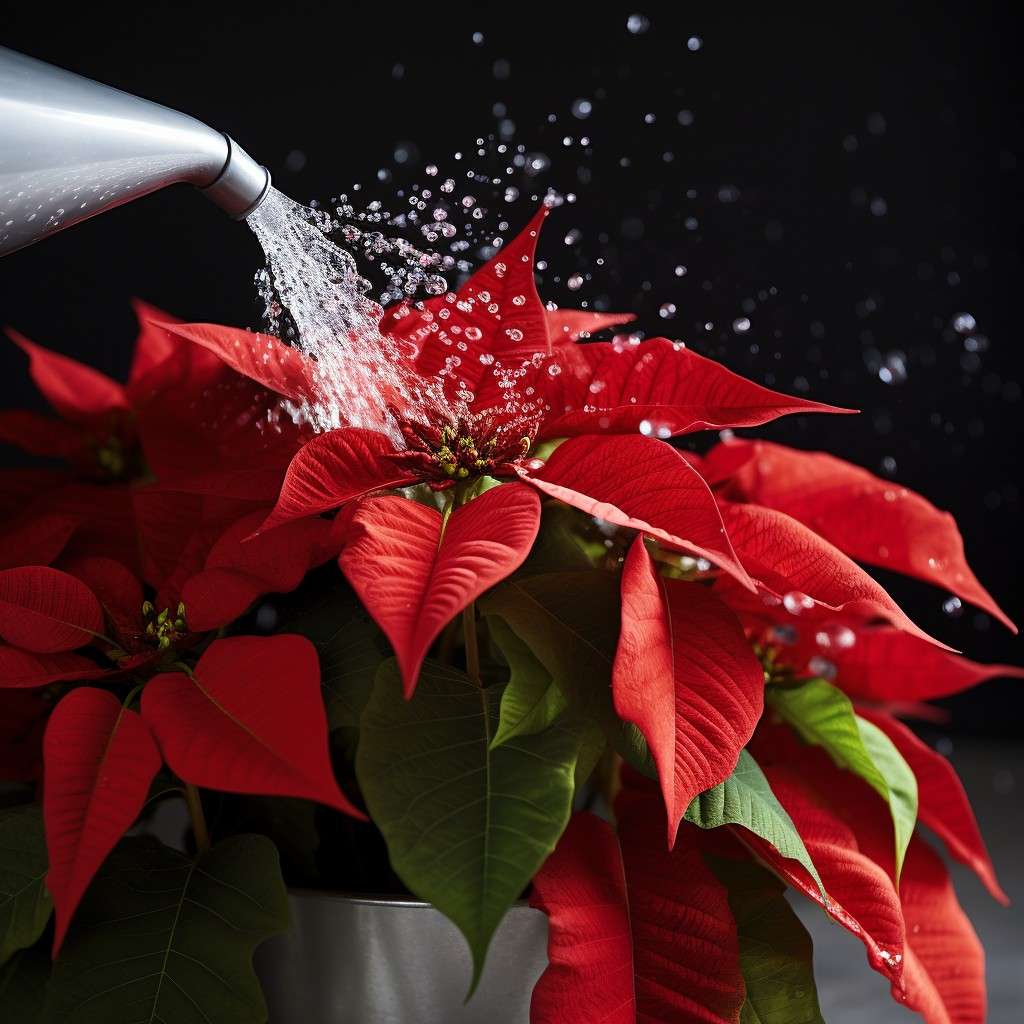
Watering Frequency
Adjust your watering schedule based on location. Plants residing near radiators in dry environments may require daily libations to maintain their vibrancy.
Watering every second or third day might suffice to keep your poinsettia tree satiated in more temperate locations. Miniature poinsettias, due to their diminutive size, necessitate meticulous care. Daily hydration checks are highly recommended for these compact charmers.
Temperature and Size Matter
The poinsettia prefers a temperate sip, so use room-temperature water. Remember, smaller pots dry out faster than larger ones, so adjust accordingly. For a typical 13cm diameter pot, approximately 100 millilitres of water, comparable to the capacity of a champagne flute, provides sufficient hydration.
This quantity prevents the formation of large soil pores, mitigating the risk of waterlogging. The water requirement diminishes when tending to miniature poinsettia set in 6 cm pots. A half-shot glass of water effectively quenches their thirst.
Less is More
When in doubt regarding your poinsettia plant’s hydration needs, a slightly drier environment is preferable to excessive moisture. Small, frequent waterings are better than infrequent deluges. Gentle sprinkles, no forceful downpours.
Hydrated from the Inside Out
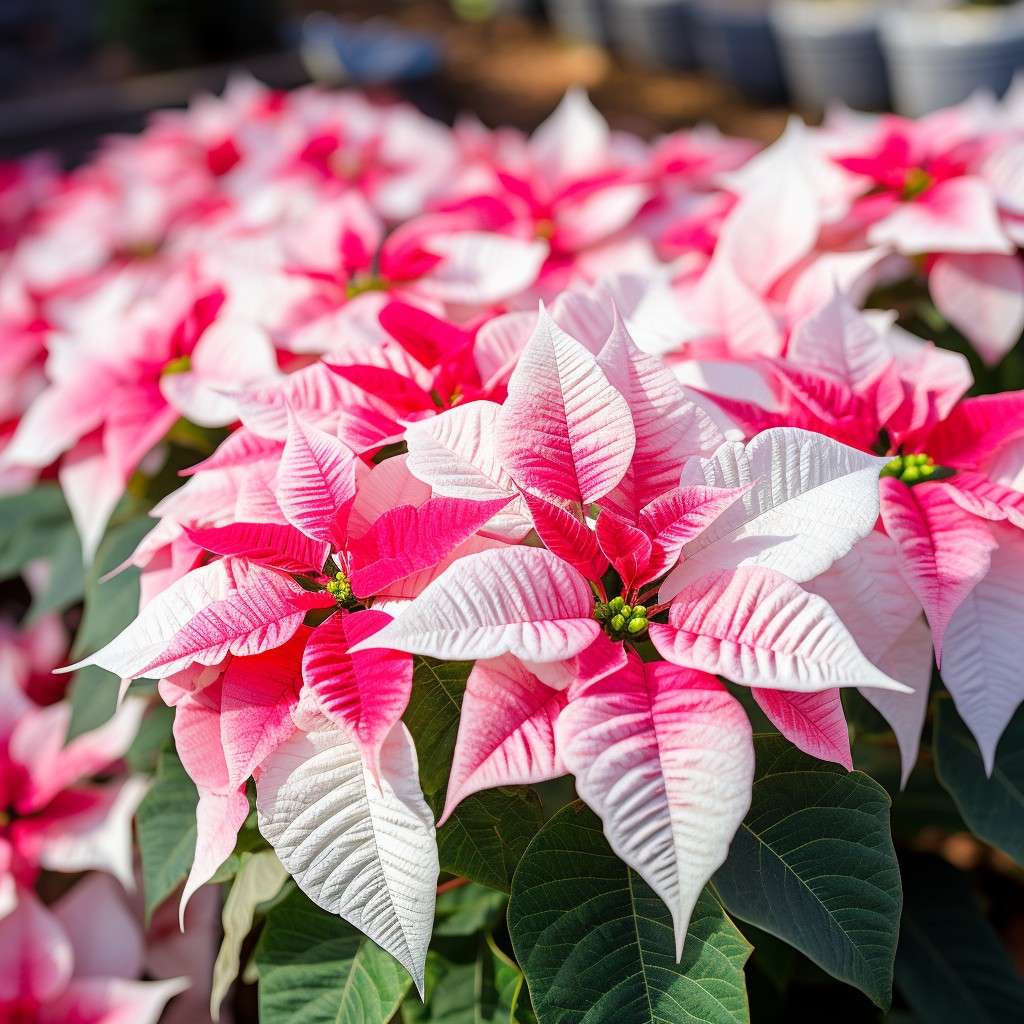
Euphorbia poinsettia craves humidity, especially when central heating cranks up the dryness. A refreshing regular misting keeps the foliage happy and healthy foliage and prevents potential distress.
Source
By following these simple tips, you will ensure your poinsettia tree receives the perfect drink, not a drowning. Remember, a well-watered plant is a thriving plant.
Beyond the Basics: Extra TLC
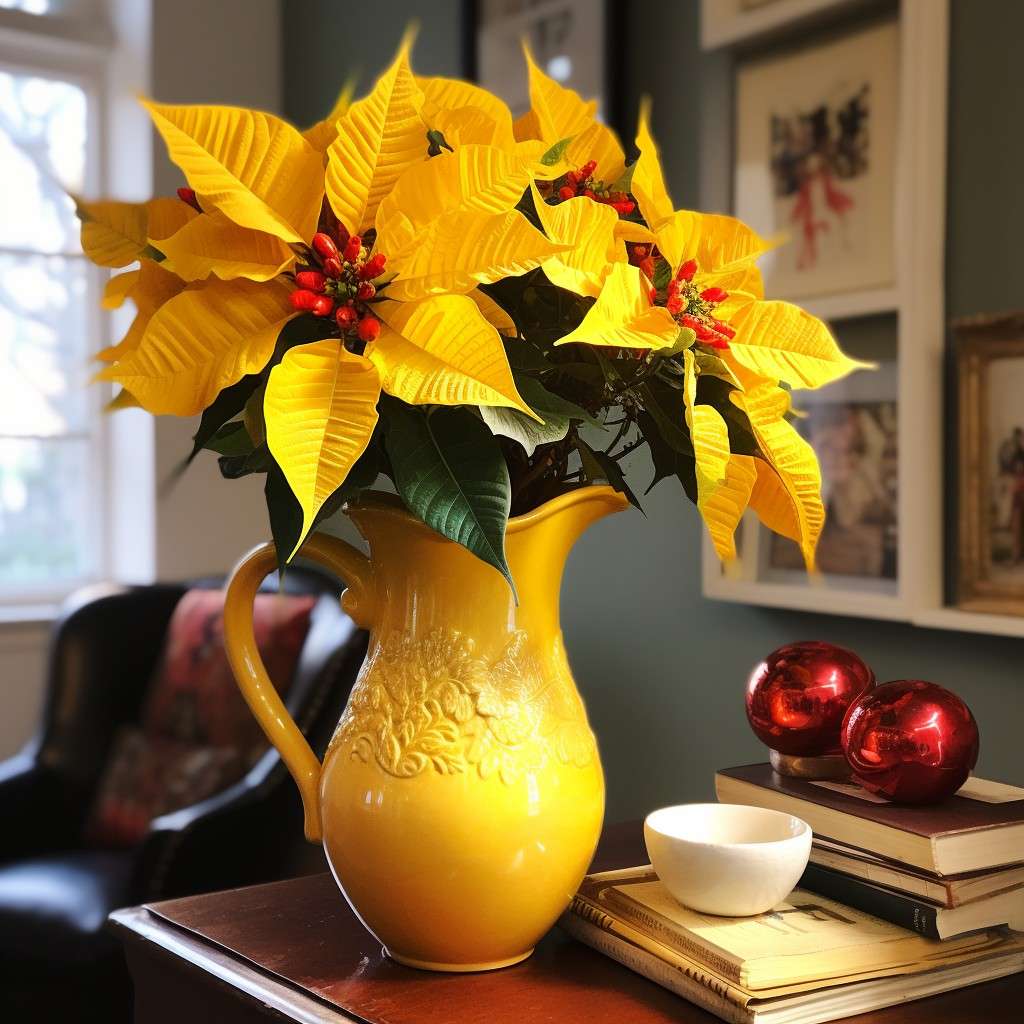
Happy Soil, Happy Poinsettias
Most poinsettia plant varieties flourish in a precise soil pH range, ideally between 5.8 and 6.2. To achieve this harmony, create a mixture of three parts soil with one part grit. This blend ensures the soil remains airy, allowing vital oxygen to reach the roots and foster healthy growth.
Art of Repotting
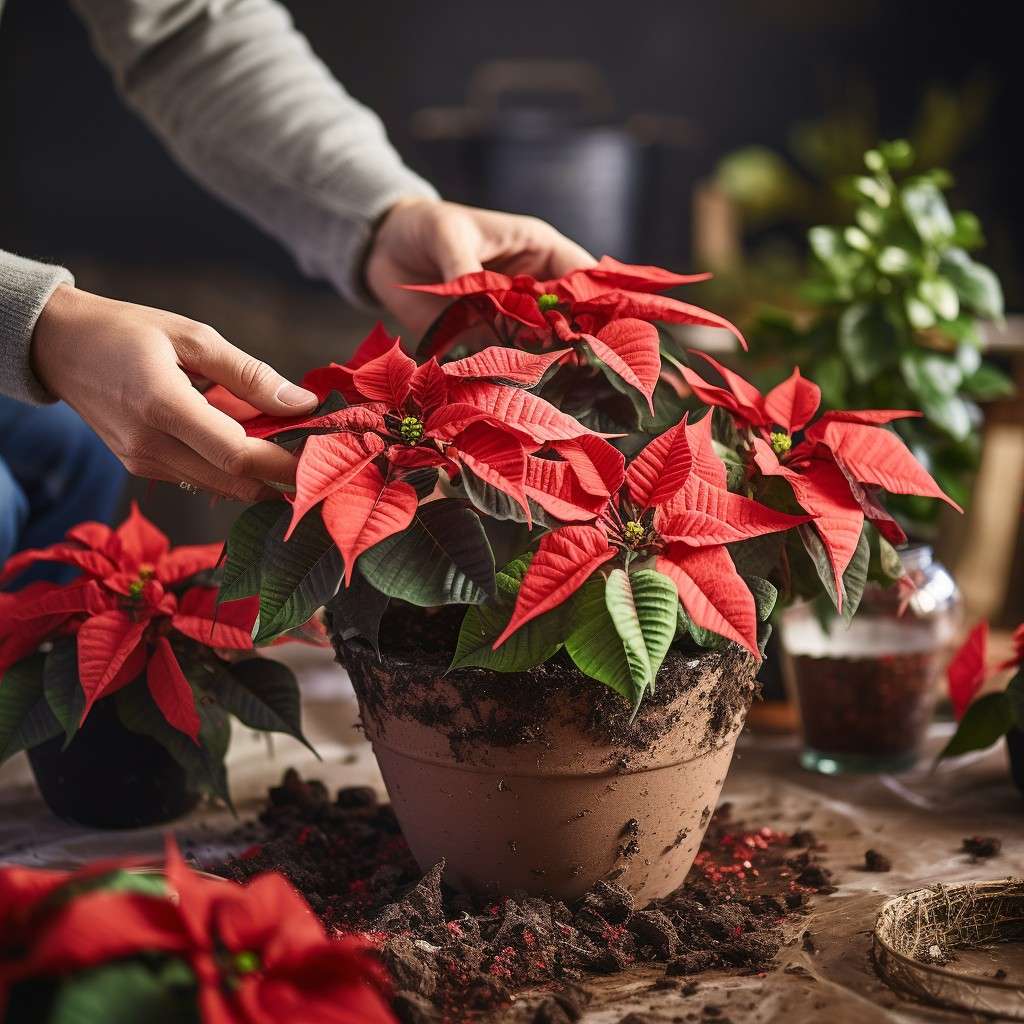
Thankfully, most poinsettia plant varieties purchased during the winter require no immediate repotting. However, should repotting become necessary, careful consideration must be given to the timing and technique.
The optimal window for repotting is typically spring or early summer, allowing the plant ample time to adjust to its new environment before winter dormancy sets in. Choose a pot slightly larger than the original, ensuring adequate drainage holes to prevent waterlogging.
Feeding Fertilisers
While a newly bought poinsettia plant typically comes pre-fertilised for its initial bloom, its thirst for nourishment might extend beyond the holiday season. If you plan to keep your poinsettia company for the long haul, consider these fertilising options:
- Weekly Nourishment: Starting four weeks after purchase, you can treat your poinsettia to a weekly serenade of diluted liquid fertiliser specifically for flowering houseplants. Adhere to the recommended dosage on the packaging to avoid overfertilisation, which can damage the plant.
- Repotting Remix: During repotting, incorporate a slow-release fertiliser into the new soil mix for sustained nourishment.
Post-Holiday Care for Happy Poinsettias All Year Round
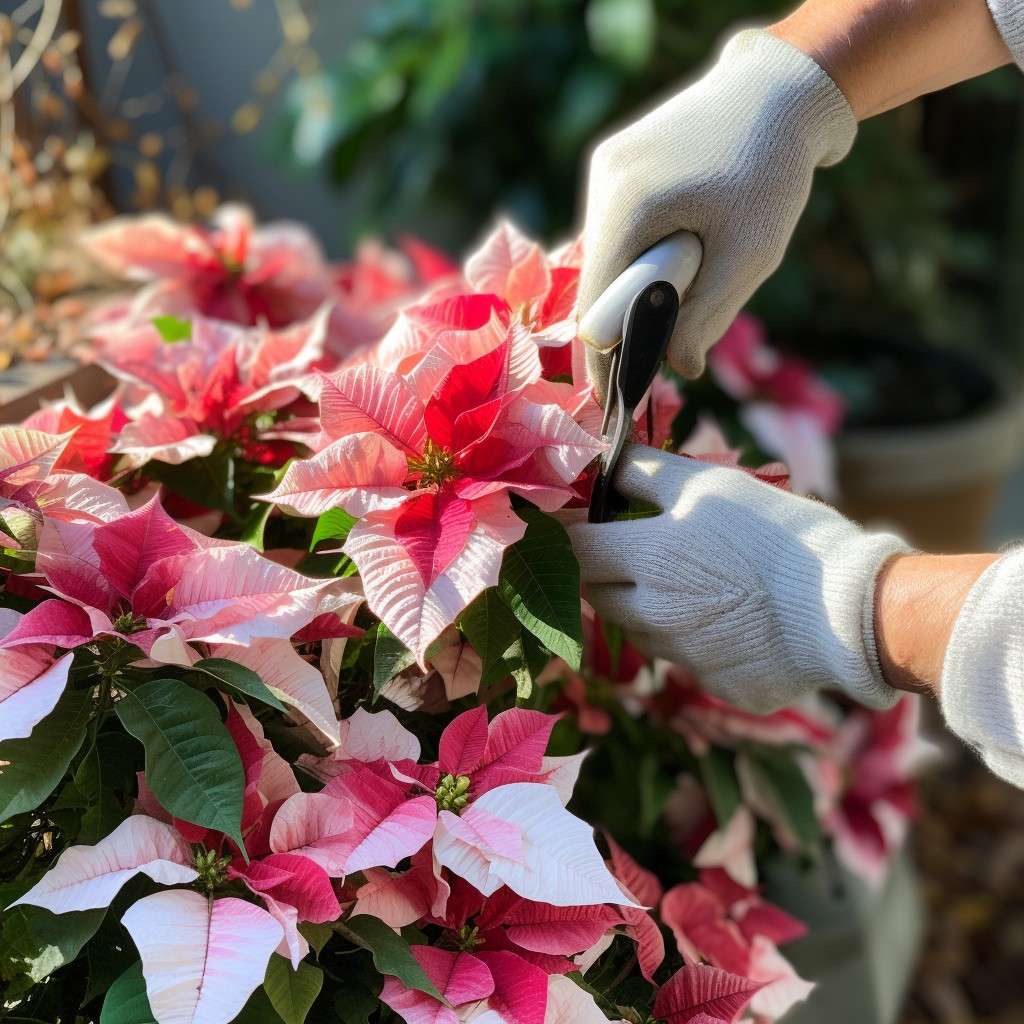
Springtime Pruning
When new growth emerges in April, encourage bushier plants by pruning your poinsettia tree to about 10cm (4in) above the soil. Place it in a cool, well-lit location with a temperature of 13°C (55°F).
Summer Repotting

In May, give your poinsettia plant new space to flourish. Repot it into a slightly larger container with well-draining soil. Grow poinsettia outside in a bright location with temperatures between 15-18°C (59-64°F) through summer.
Source
Autumnal Transformation
As November arrives, it’s time to trigger the festive rebirth of the Christmas poinsettia. To encourage blooms in the vibrant red Christmas plant poinsettia, provide 12 hours of bright daylight followed by 12 hours of complete darkness for 8-10 weeks. It mimics shorter winter days, prompting flower bud development.
The Bottom Line
Remember, a little TLC goes a long way in keeping the red Christmas plant poinsettia happy and spreading its holiday cheer throughout the year! These delicate beauties respond well to gentle care, rewarding your efforts with lush foliage and, with proper light manipulation, even potential reblooming for next December.
As we embrace the spirit of renewal and rejuvenation, let’s not forget that our living spaces are an extension of our personal style and well-being. This is where the Interior Company steps in and helps you create harmonious havens for you and your loved ones.
*Images used are for illustration purposes only. Interior Company does not hold any copyright to the images unless mentioned explicitly.*
